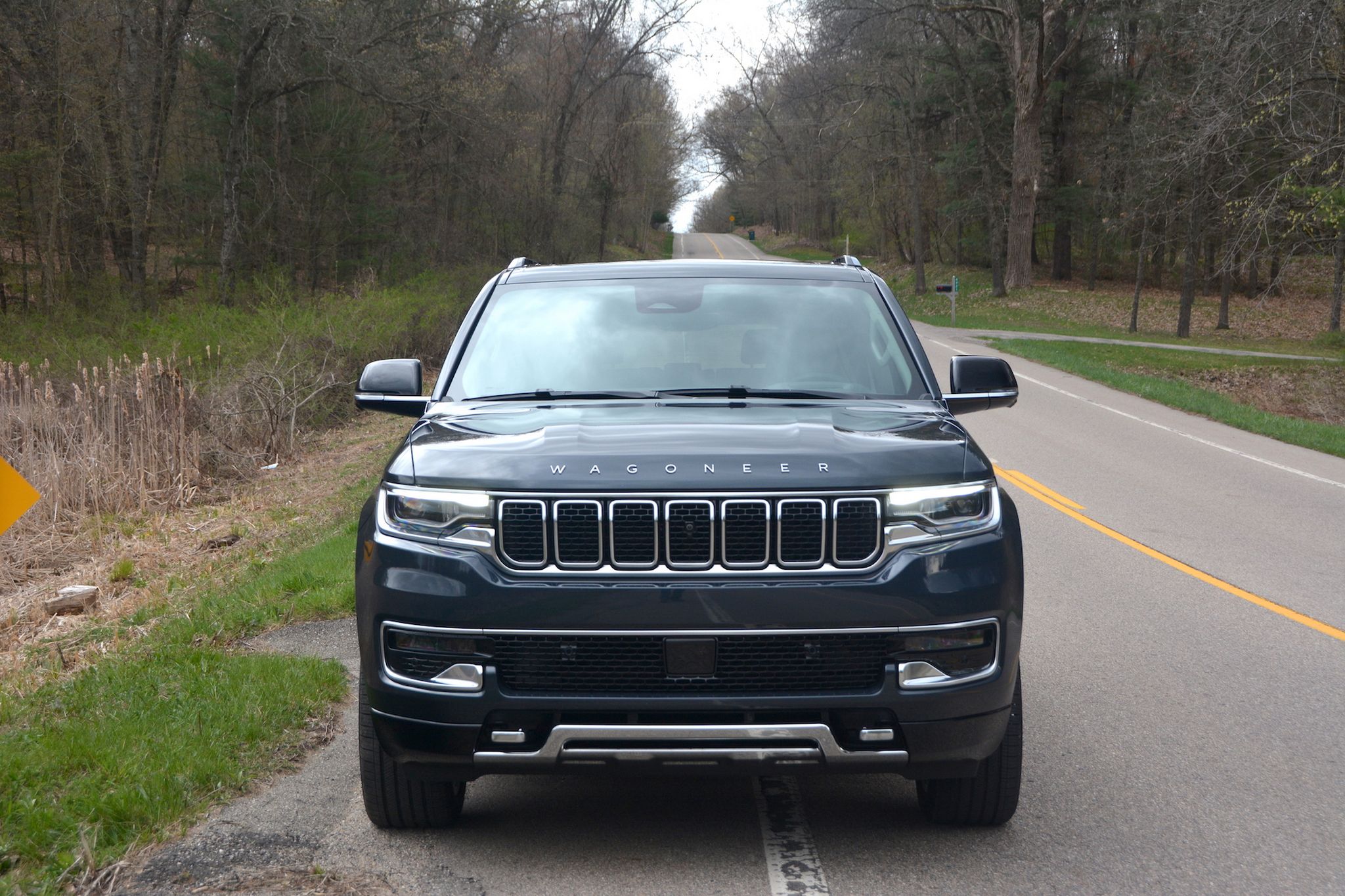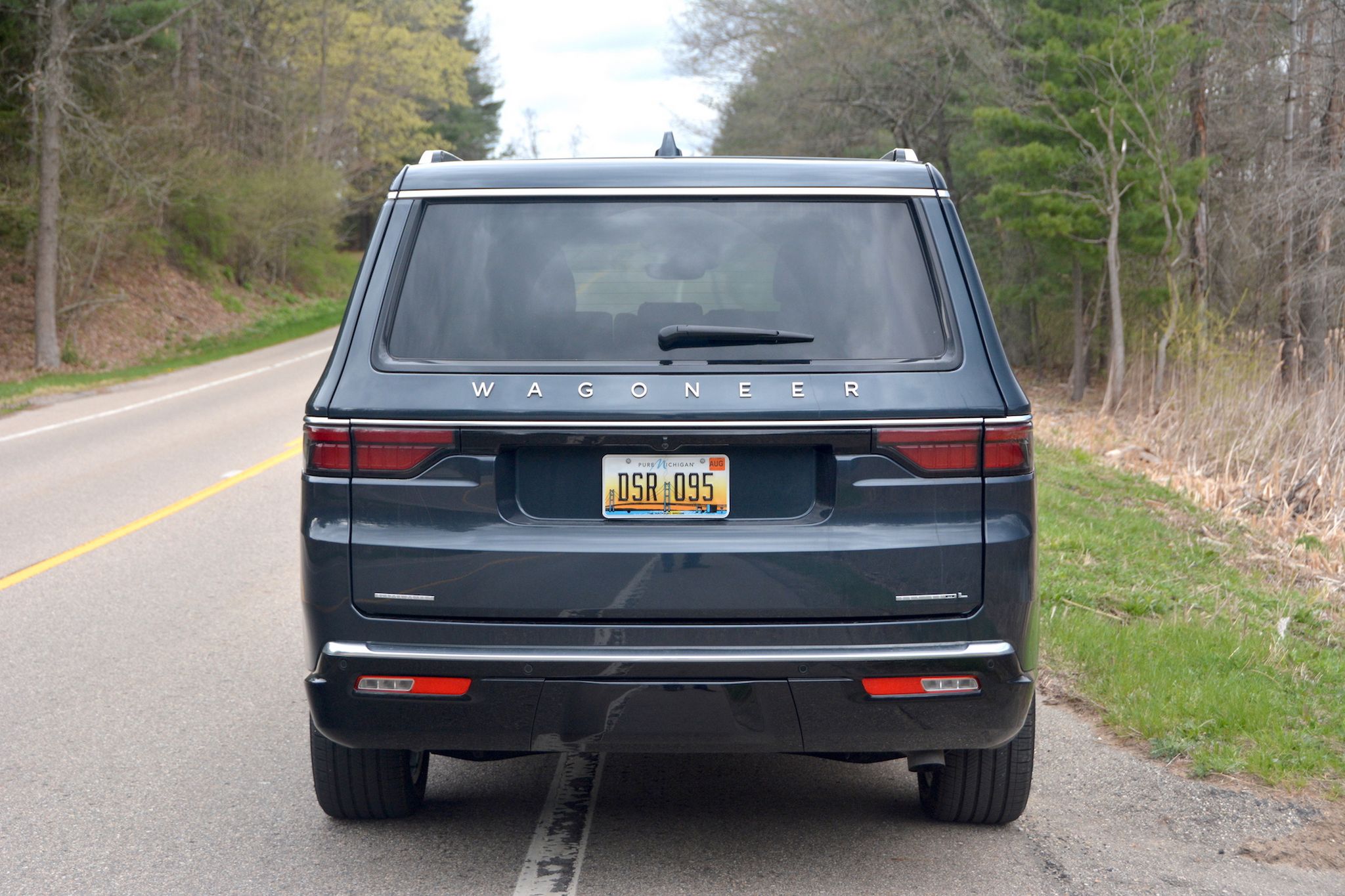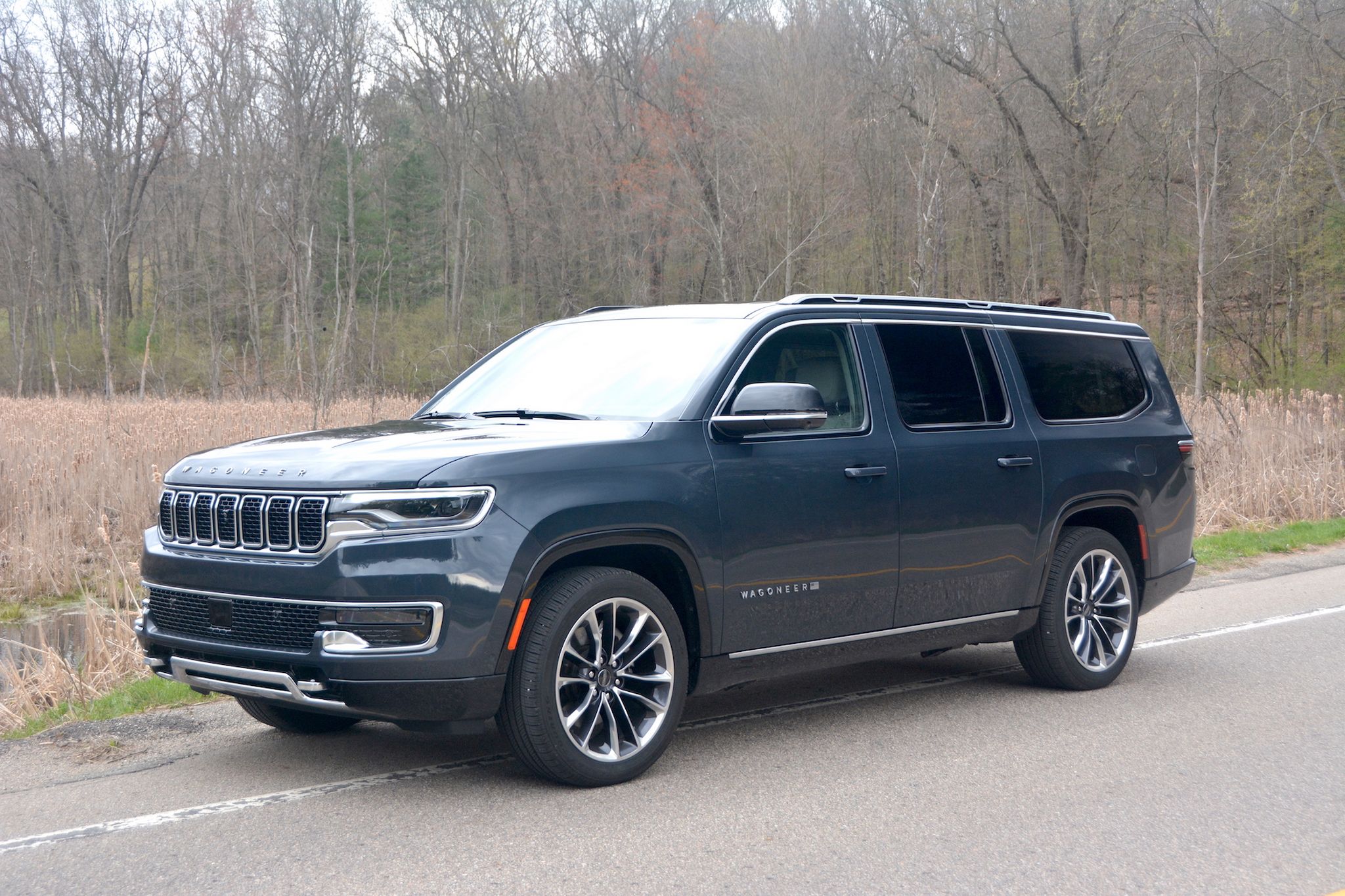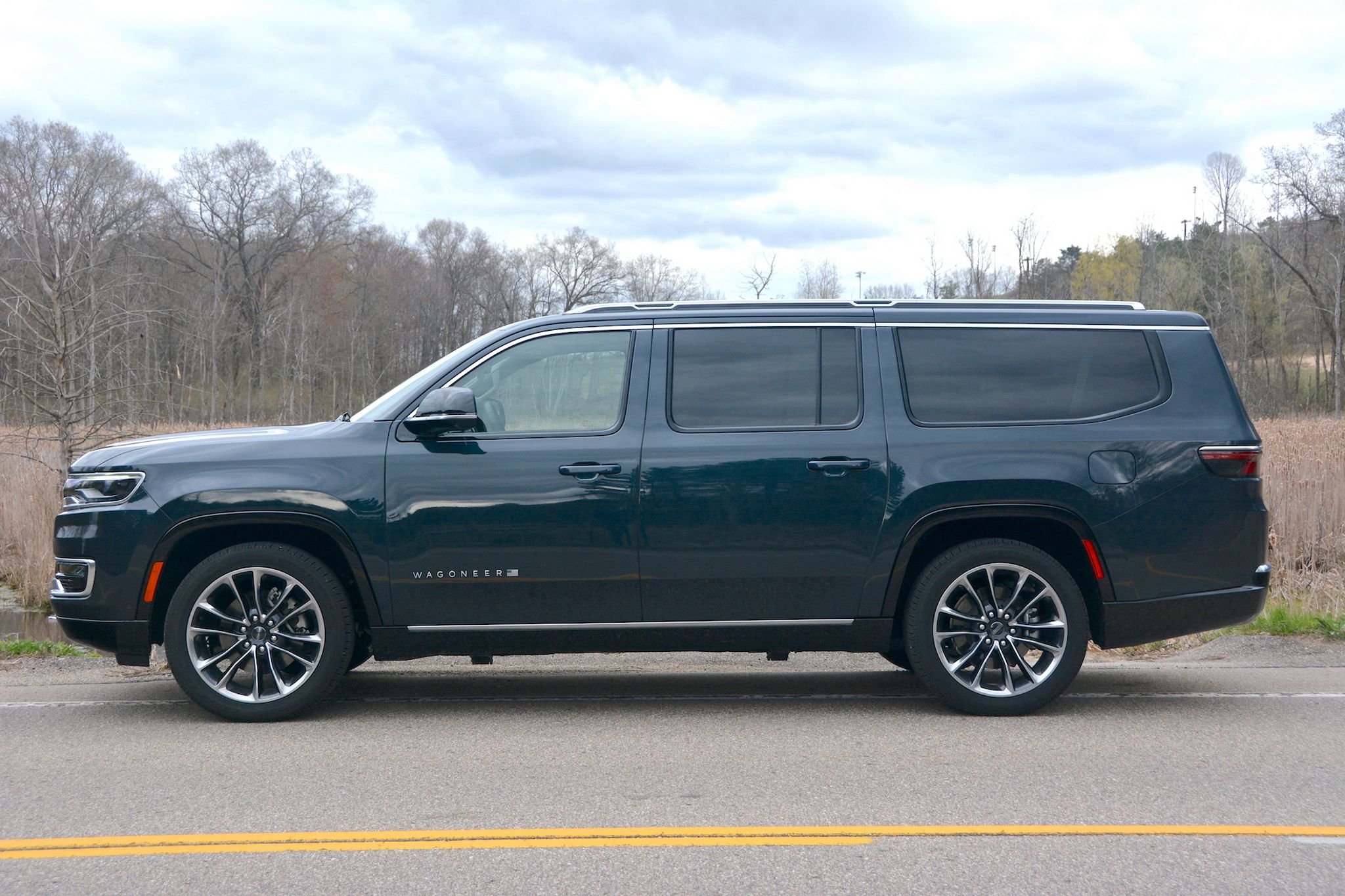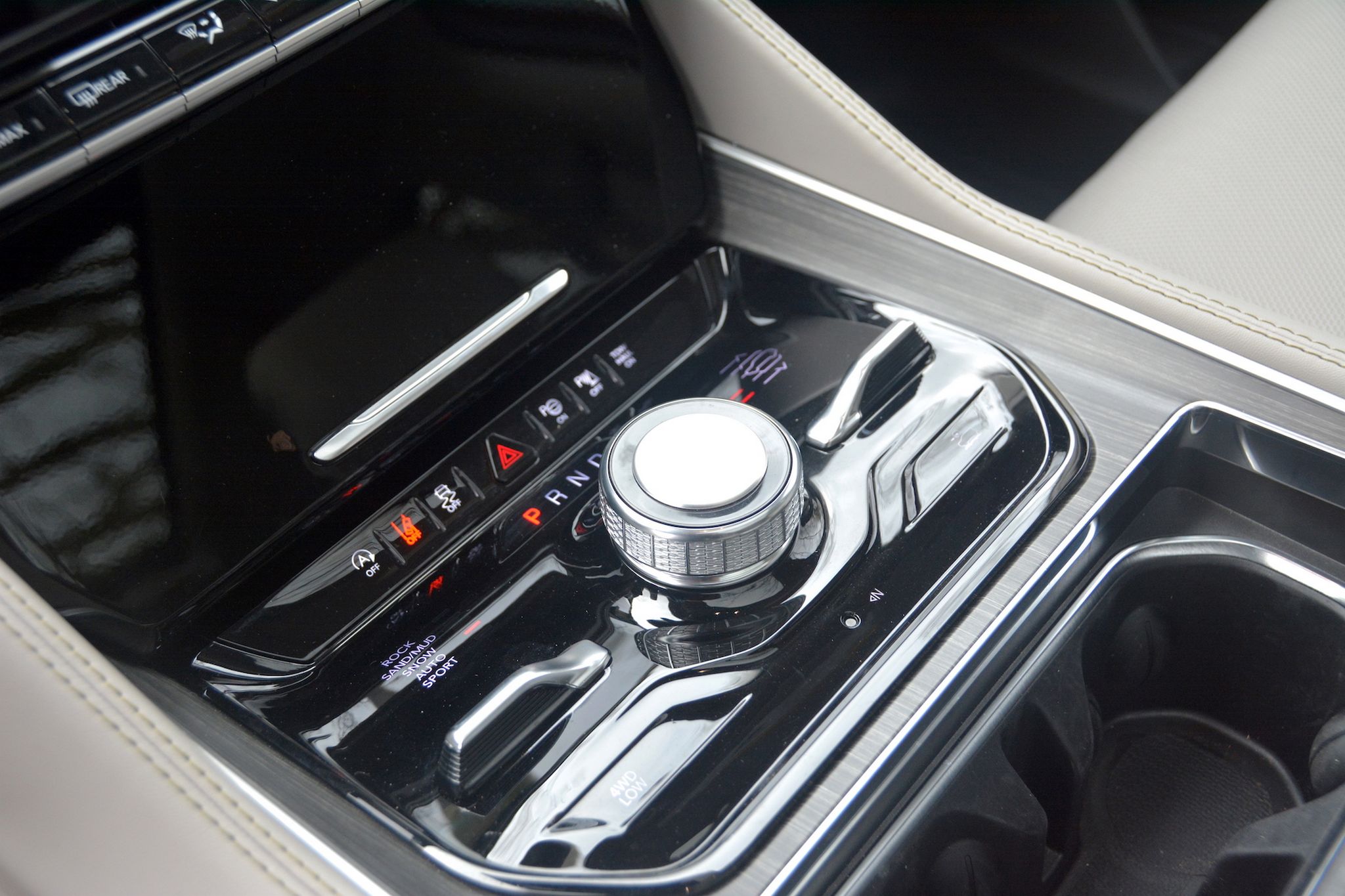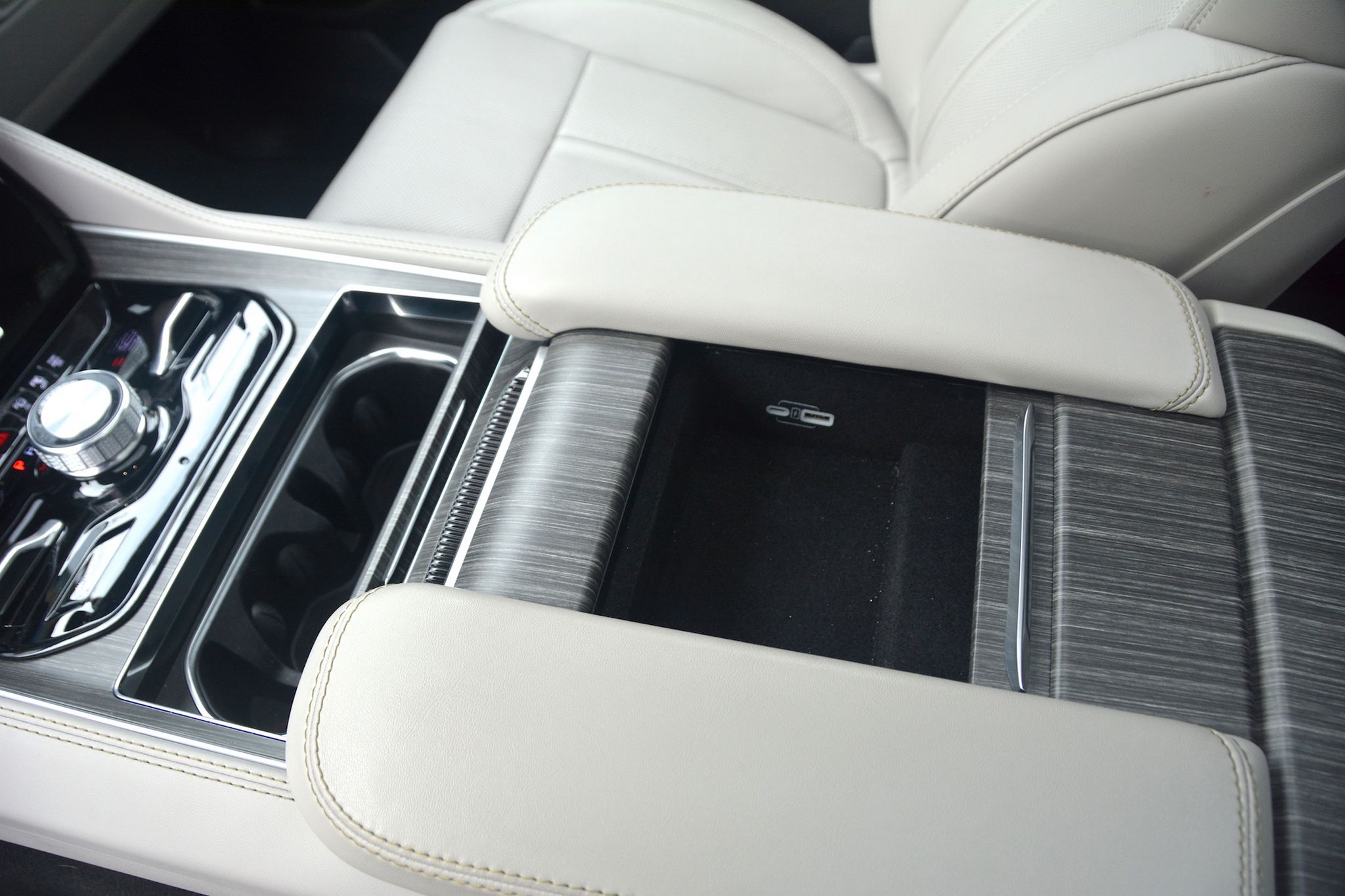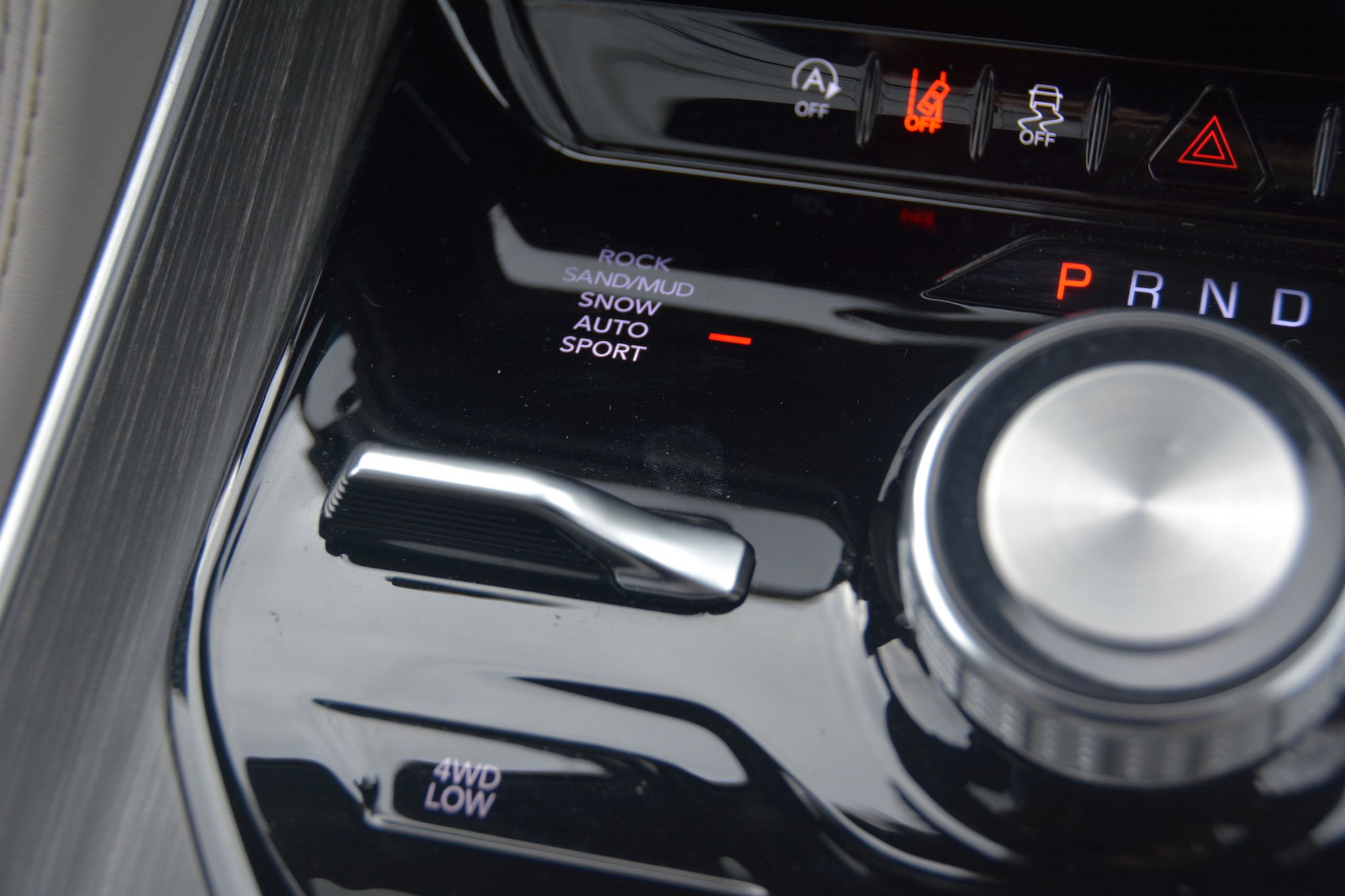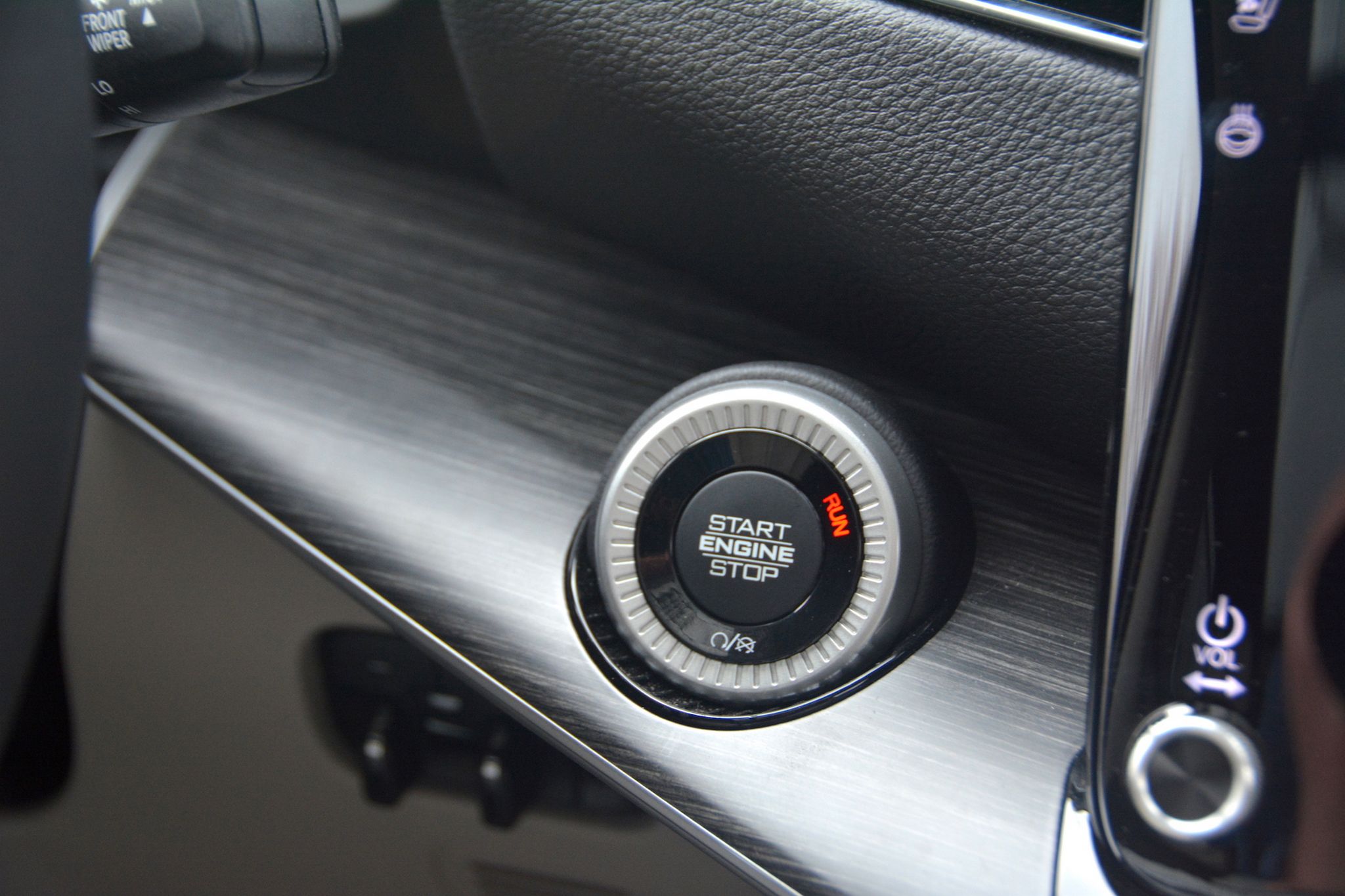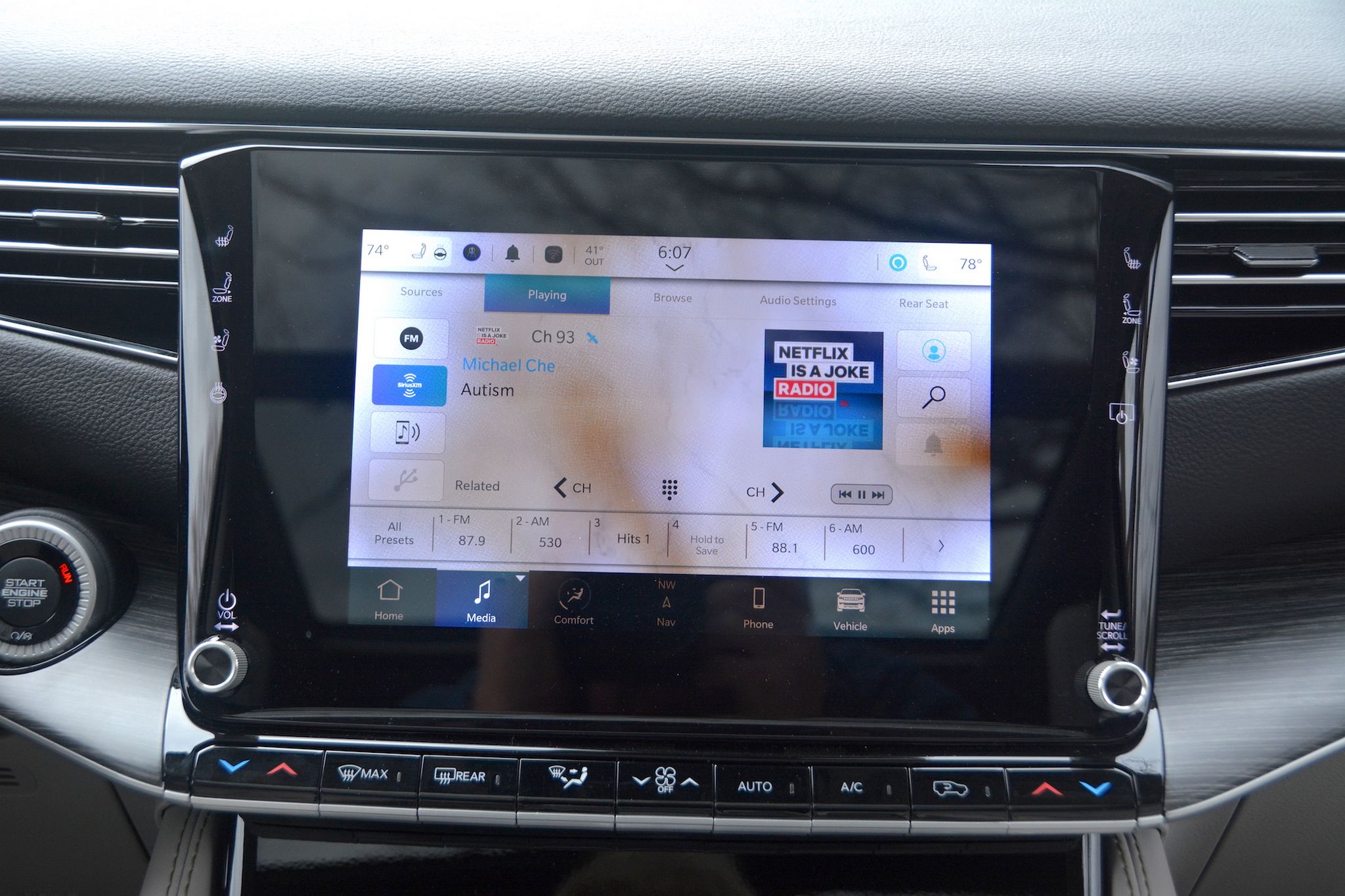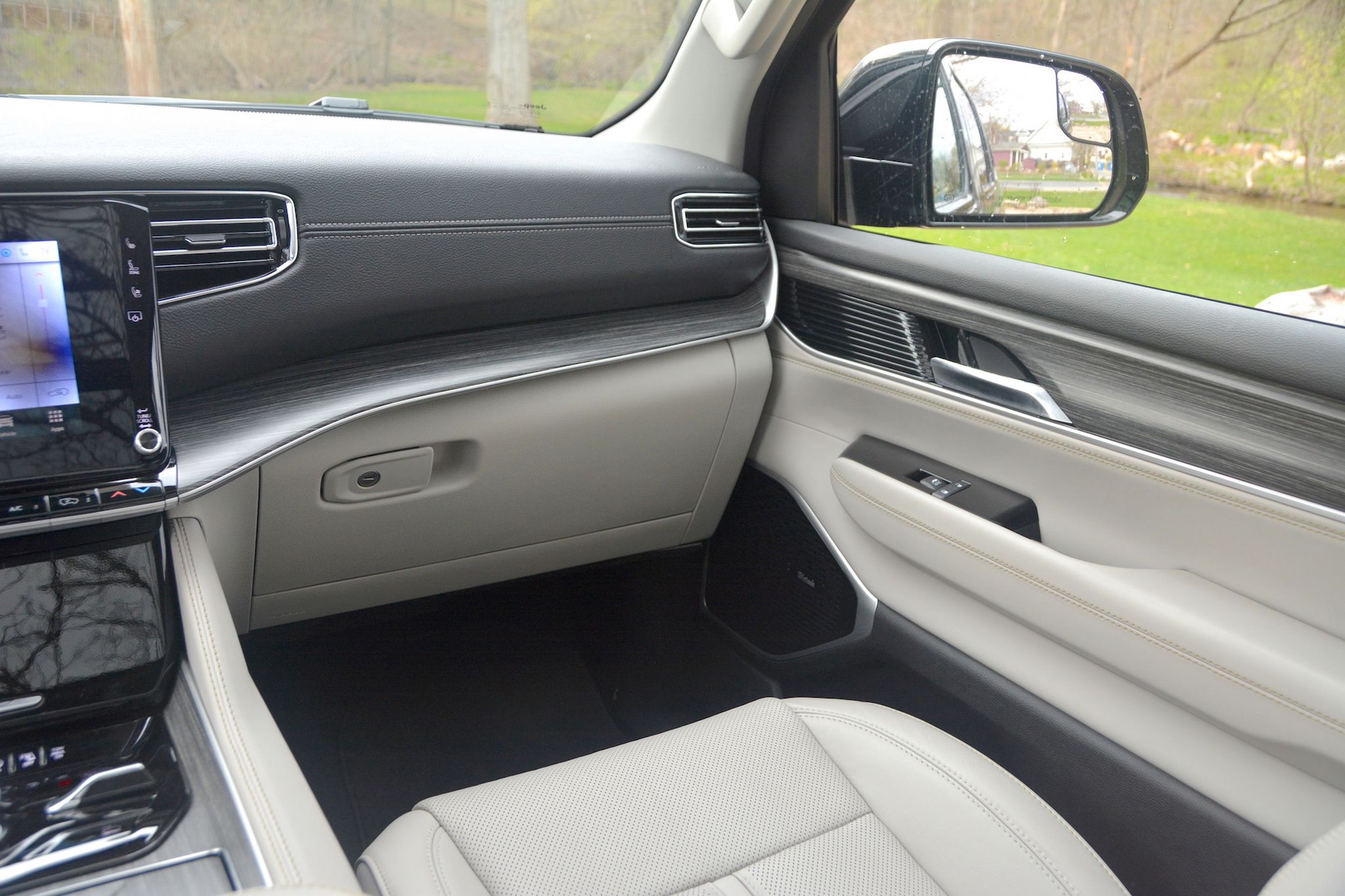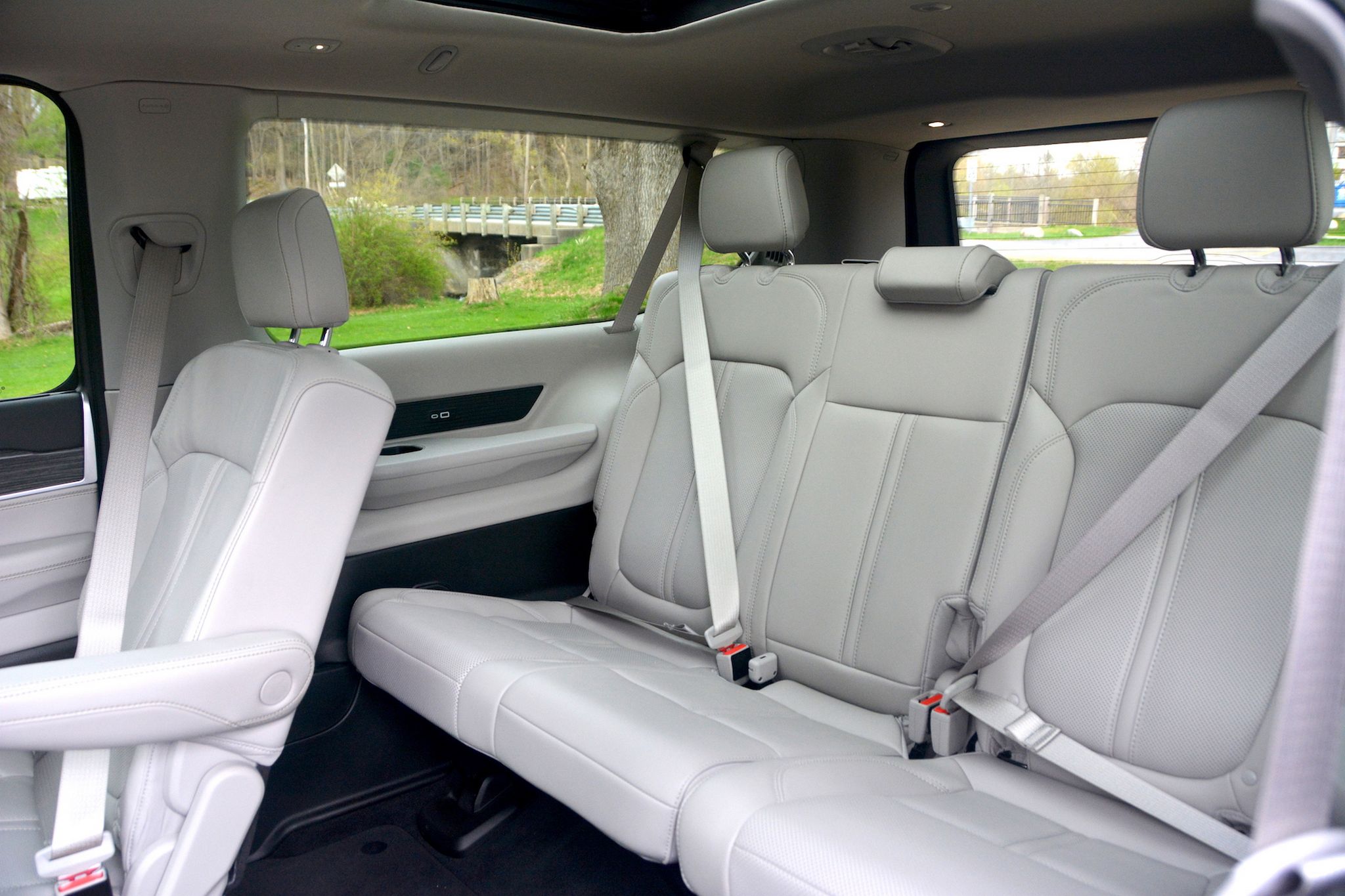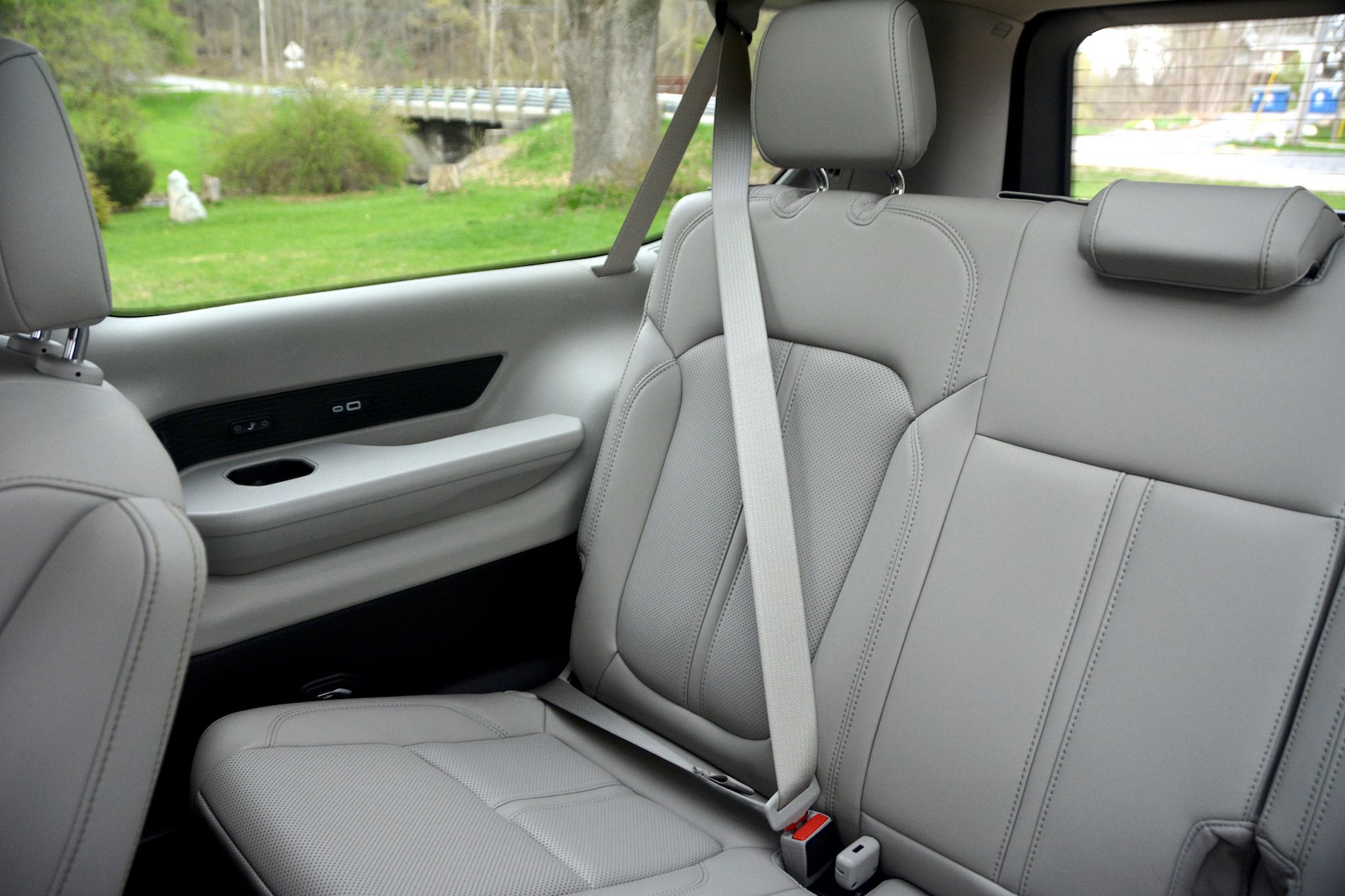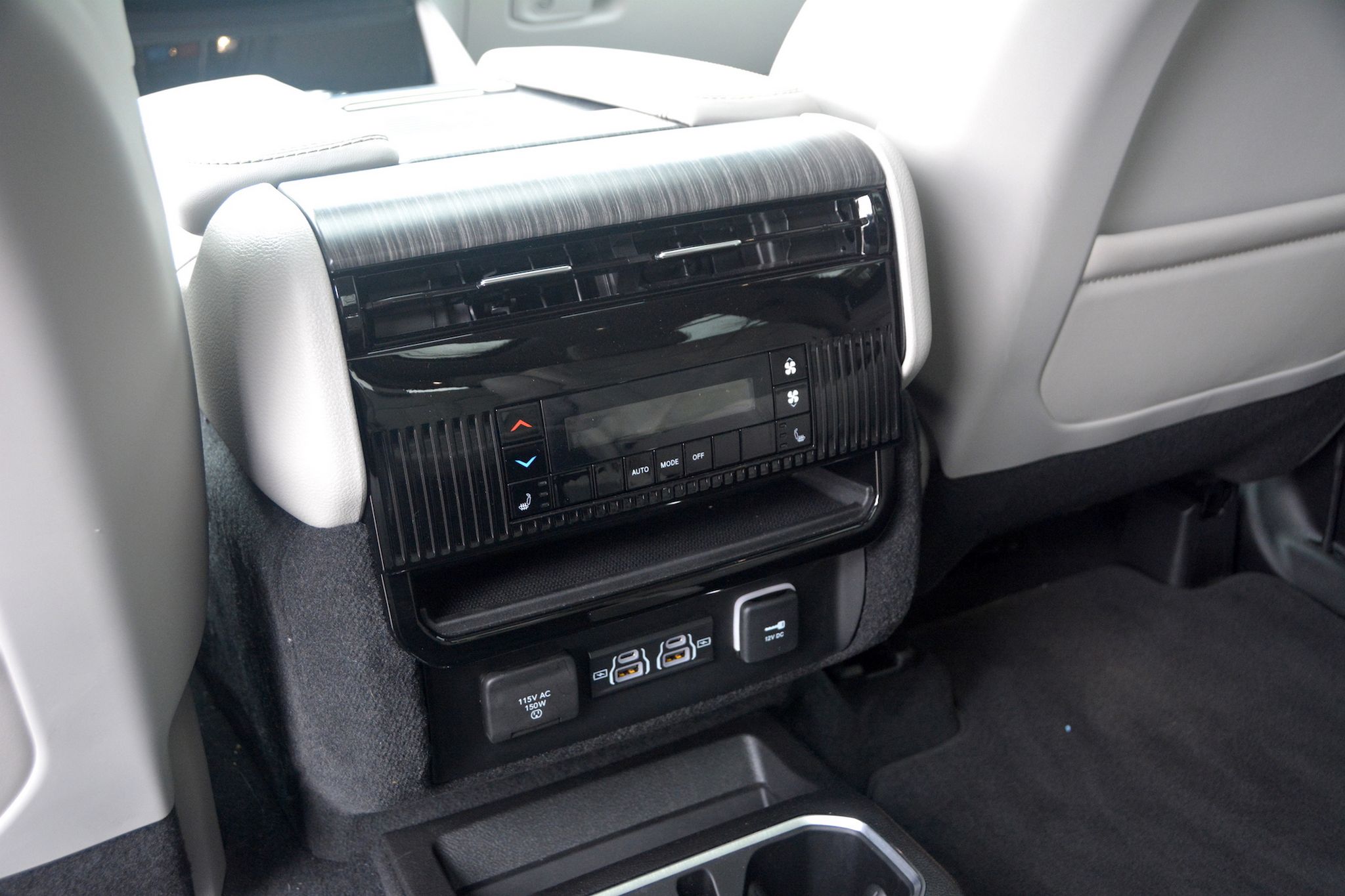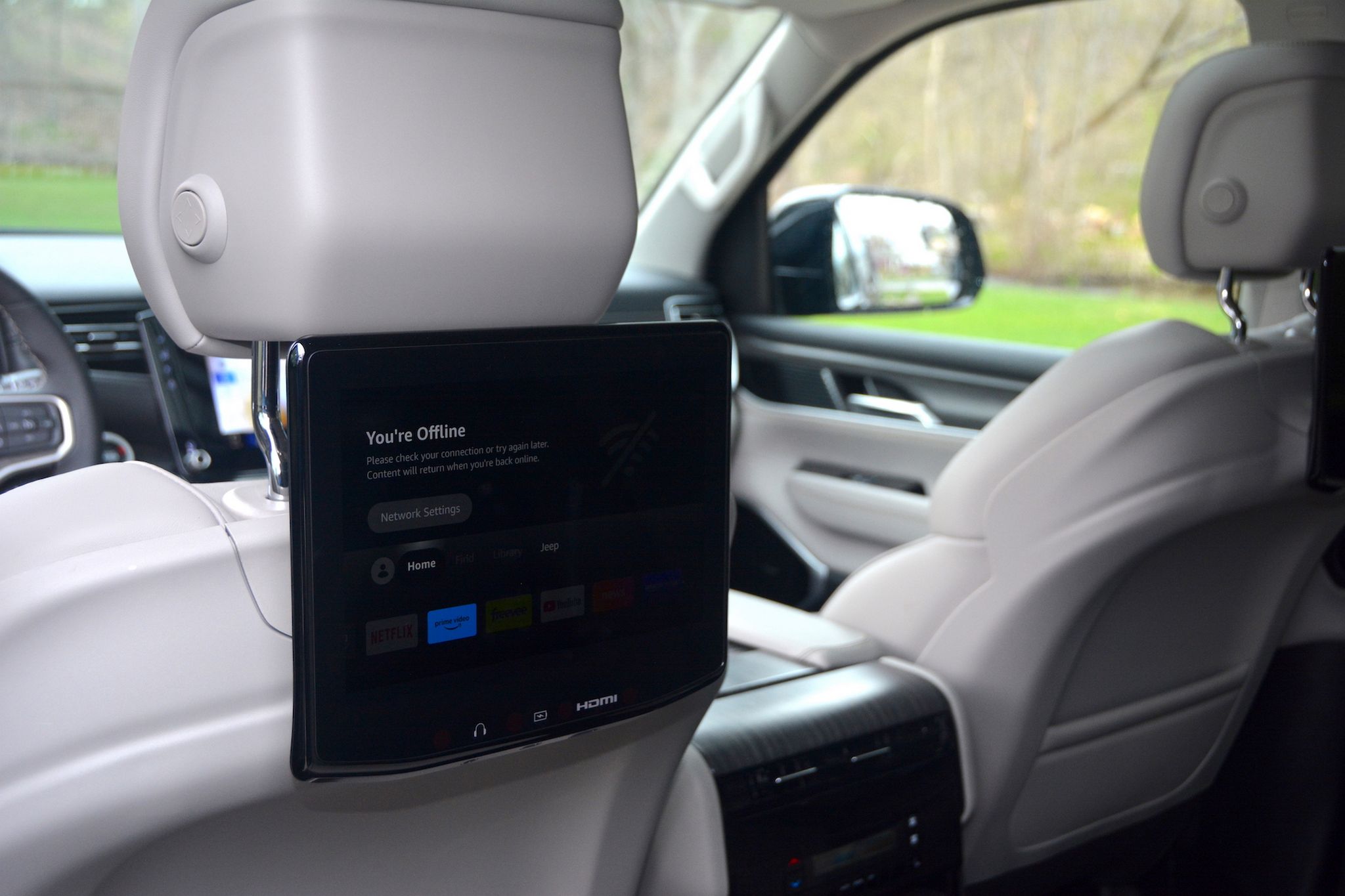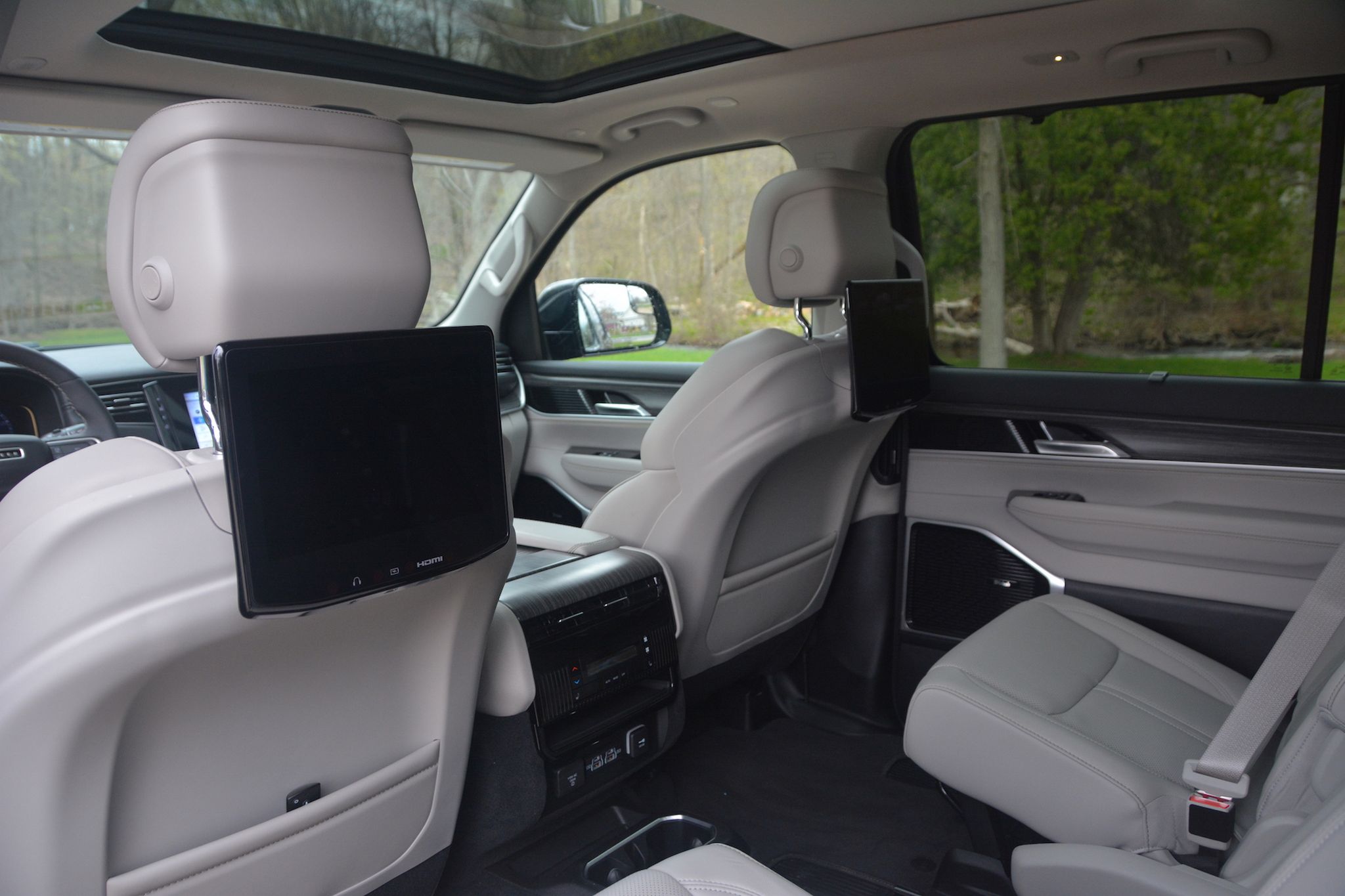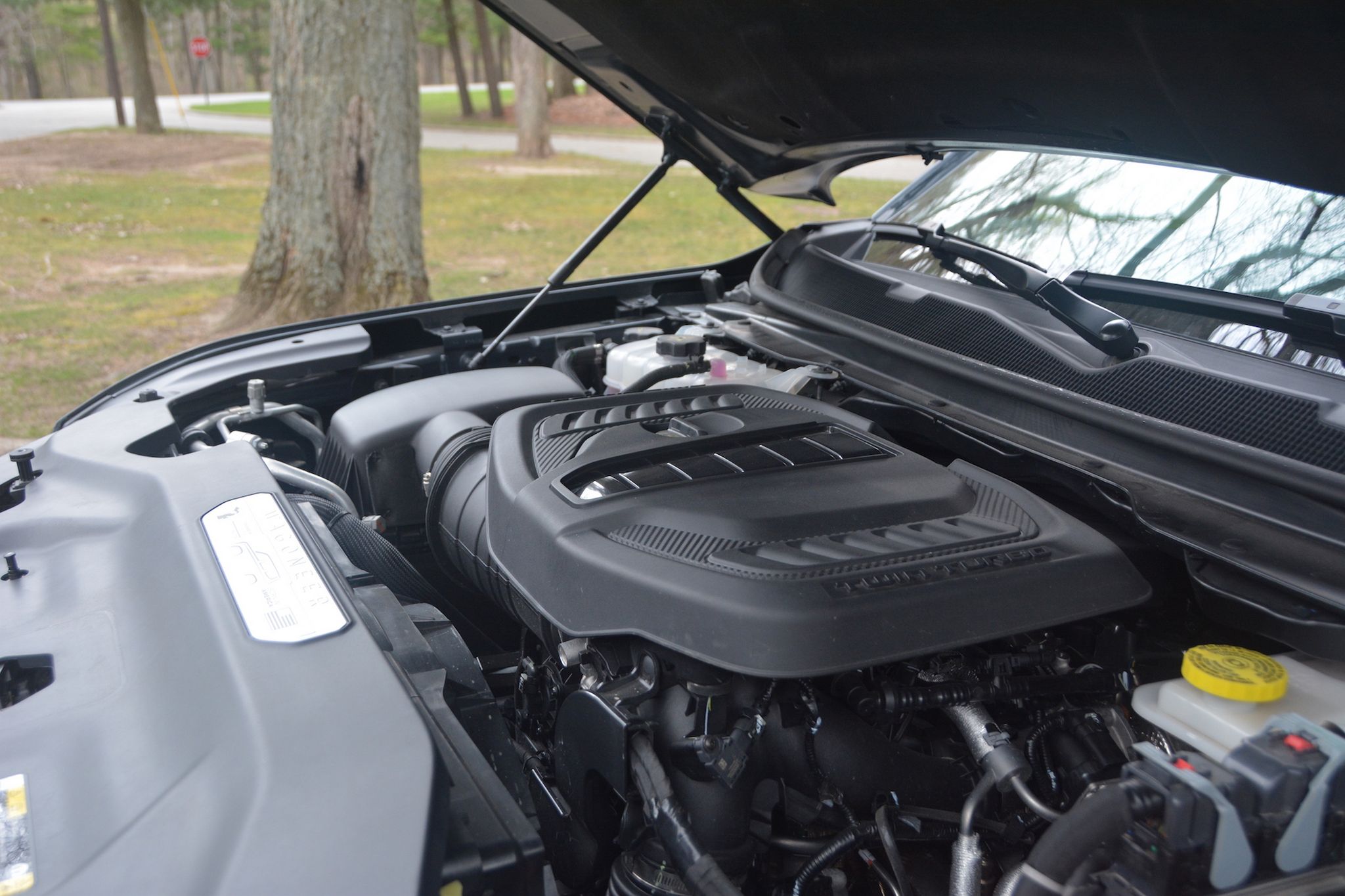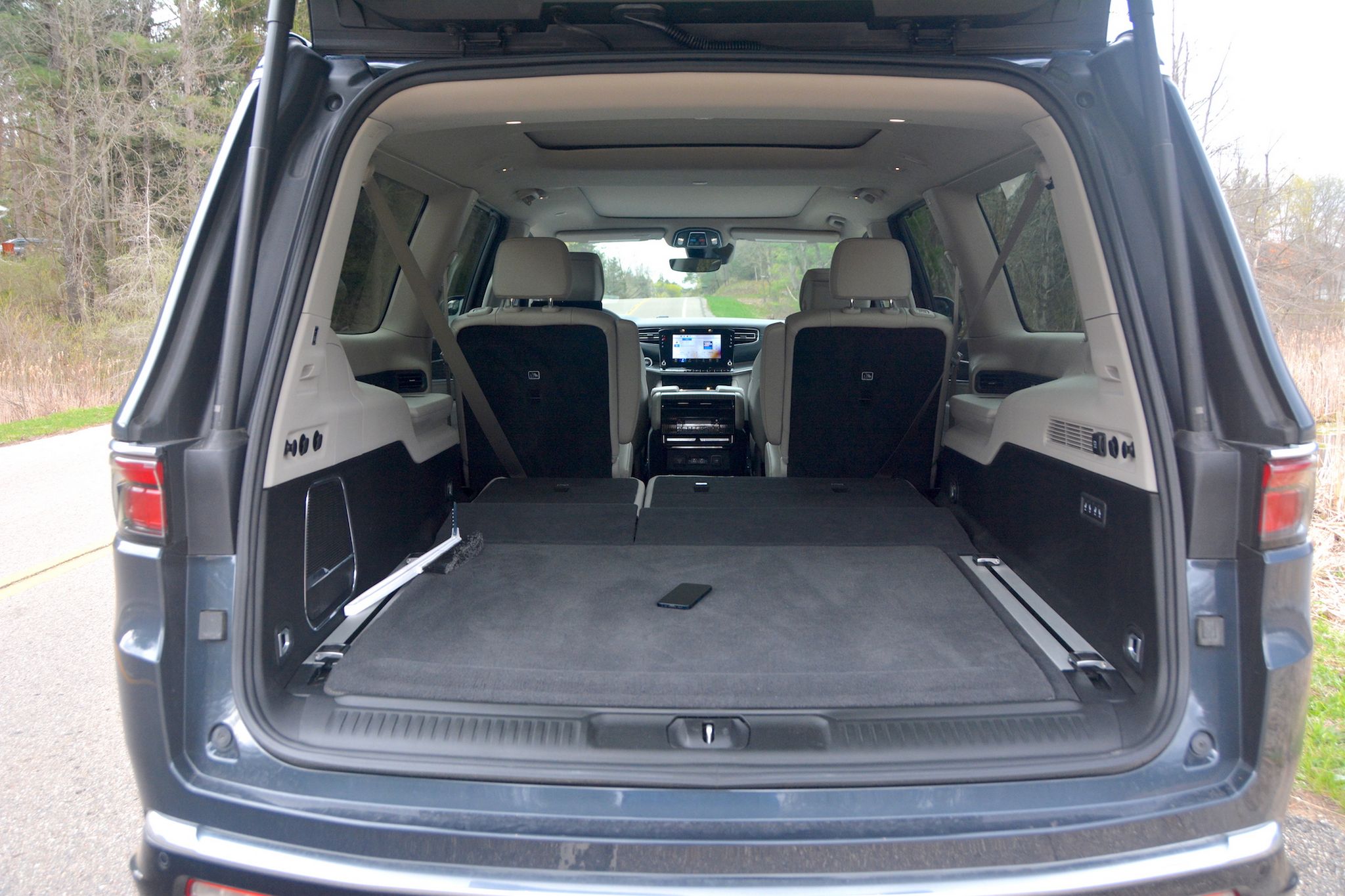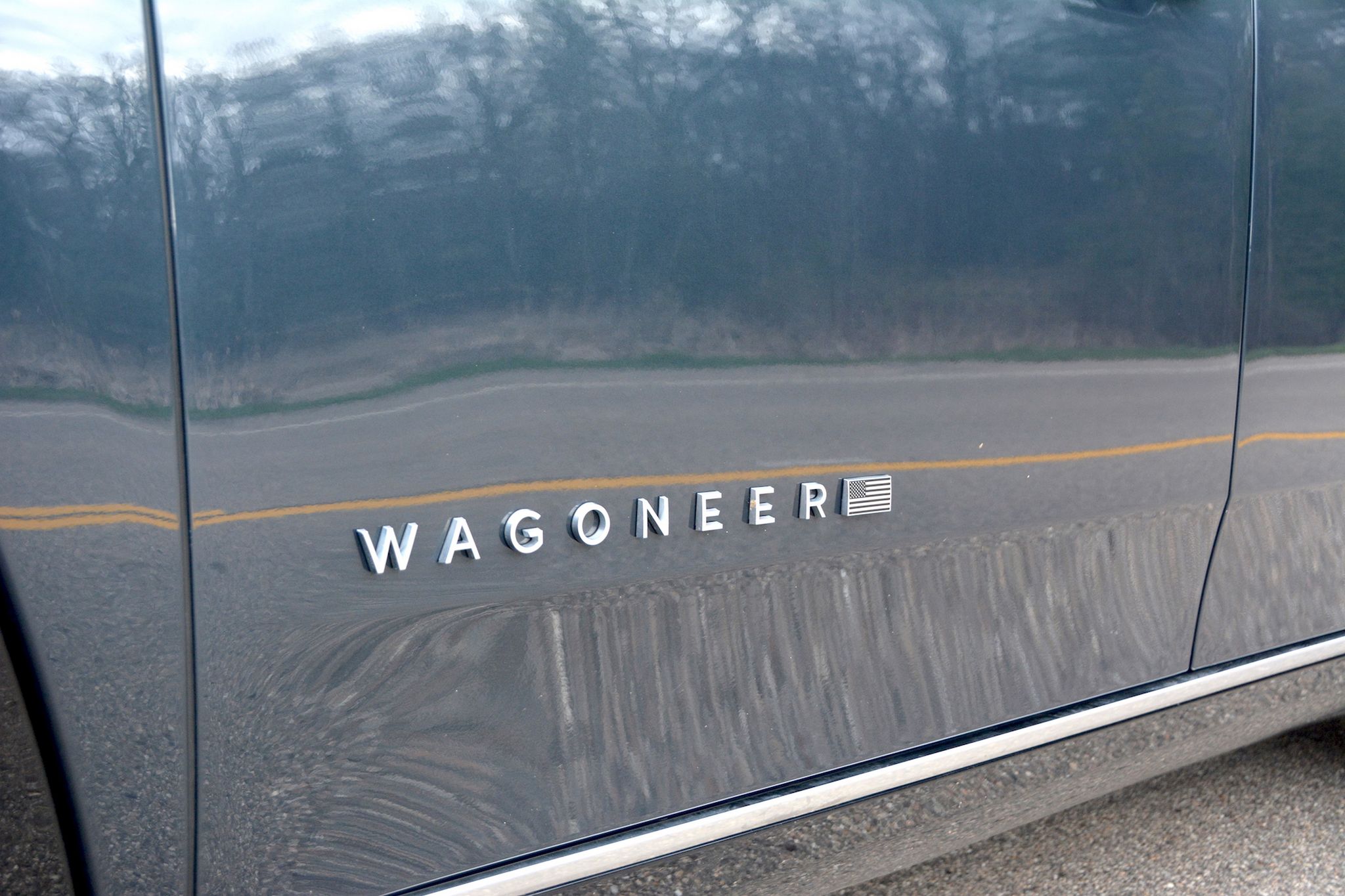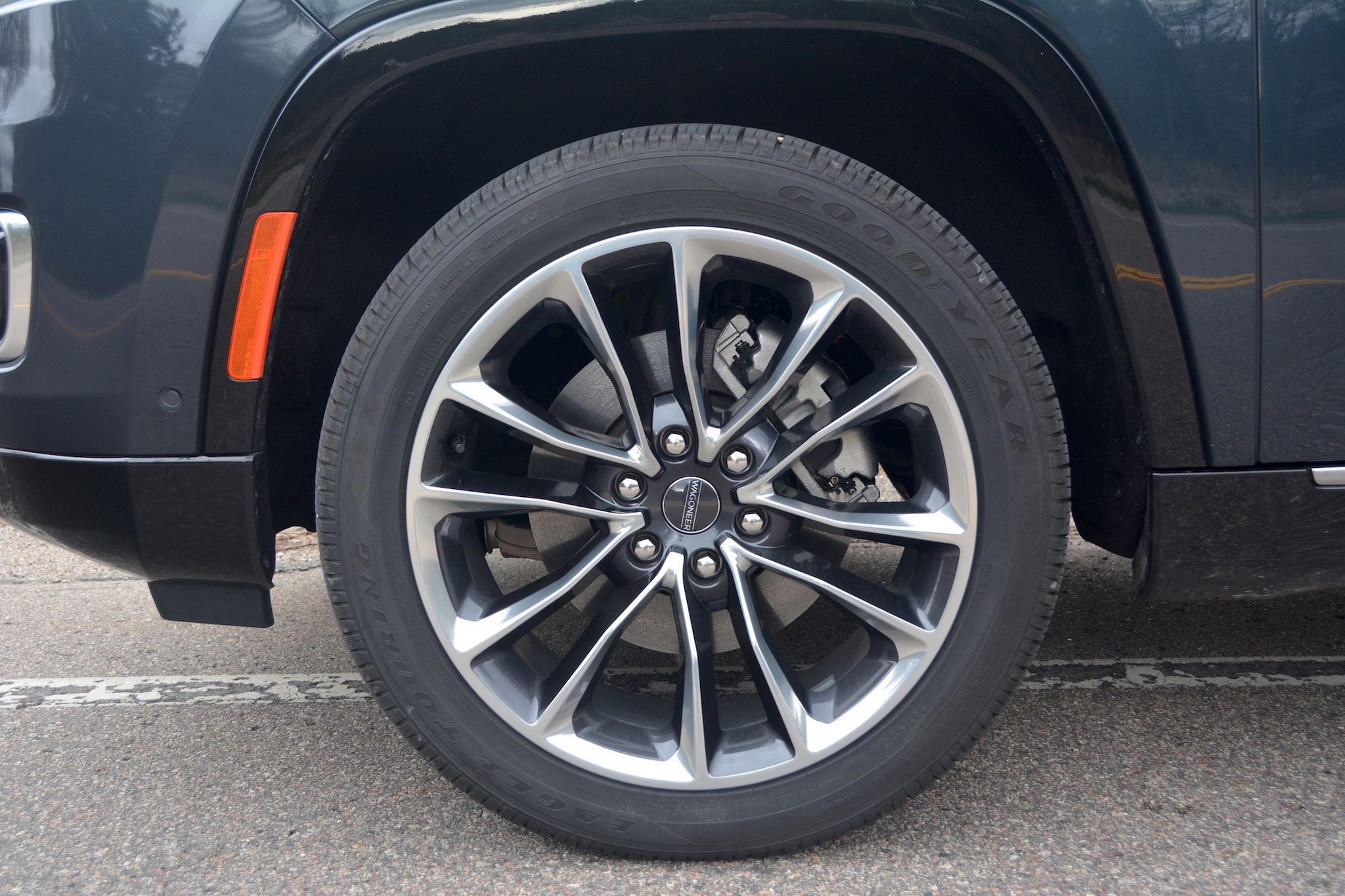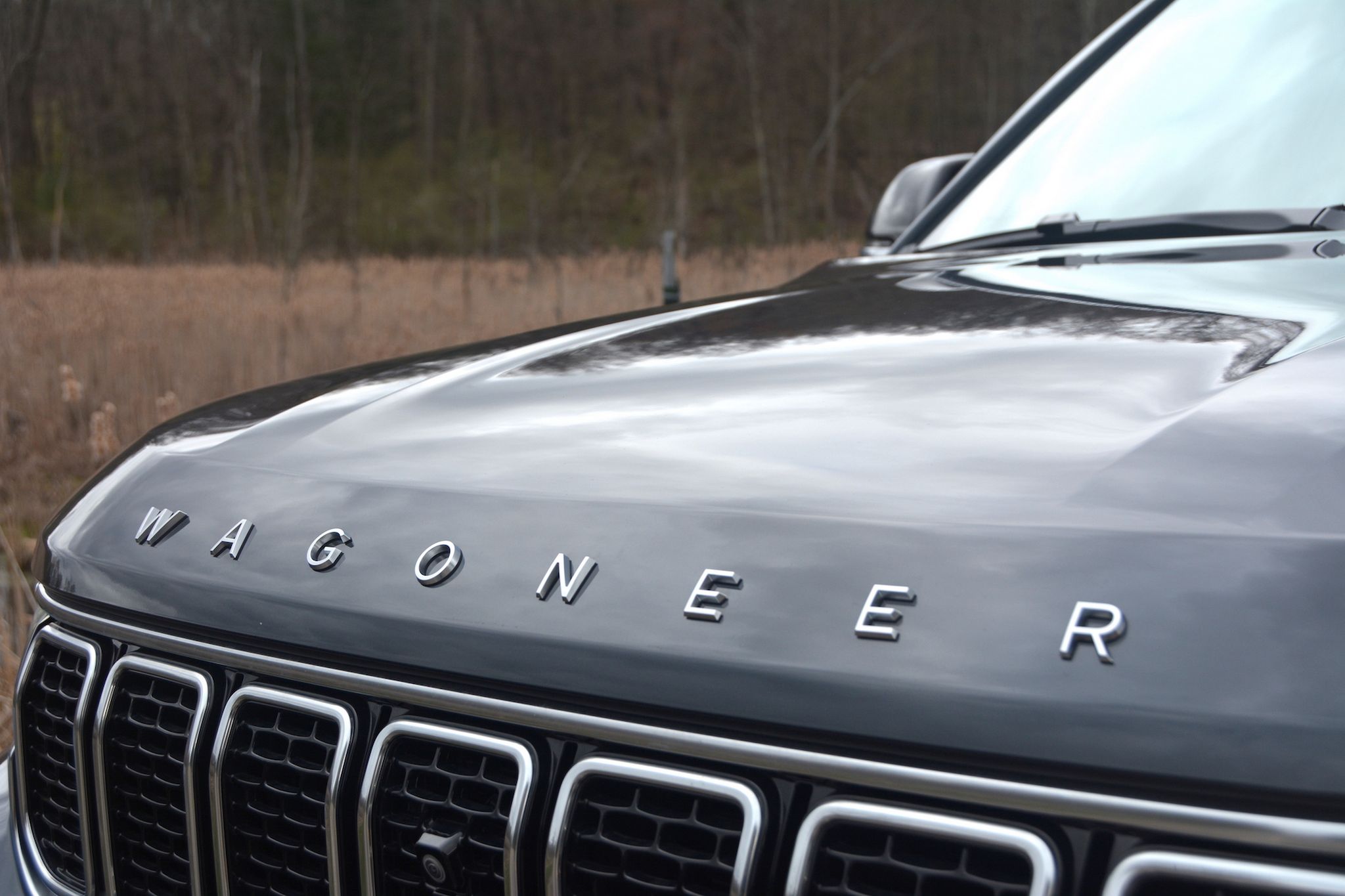Late last year, Jeep loaned us their shiny new Grand Wagoneer. With it’s exquisite interior, endless options list, and rugged good looks, we found it quite Grand indeed. Then we began wondering what made it more Grand than the base Wagoneer. After crawling all over the two models at the Chicago Auto Show this spring and not finding an obvious answer, we decided that only by spending some quality time with the regular Wagoneer would the differences become more obvious. After a little begging, Jeep sent over a Wagoneer L Series 3 for us to spend some time with.
When it arrived, we immediately noticed that something was different about the Wagoneer, design-wise. What was it? Something about it made it look sharper than the Grand Wagoneer we’d driven before. Then it hit us. It was longer than the Grand Wagoneer we’d last driven. Longer than any Wagoneers we’d seen on the road up to this point. After checking the build sheet, we noticed that the Wagoneer was an “L” model. The rear-most windows on the Wagoneer were longer than normal. There was an extra few feet behind the 3rd row seats. The additional length really improved the overall look. Perched over the large, bold 22” wheels it had a more sporting look. We preferred it to the short model.
Inside is where the Wagoneer is truly distinguished from it’s Grand sibling though. While still one of the nicest interiors we’ve ever been in, the materials are a little lower rent than in the Grand Wagoneer. The rich leather-covered dash is replaced with one covered in a rubbery vinyl plastic. The leather throughout is a lower grade as well. It’s still nice, but not nearly as nice as in the Grand Wagoneer. Call it “utilitarian-plus.” Gone are the rich woods on the center console, replaced with cheaper, more common woods and nice plastics. Overall, it’s still a fantastic interior but it’s a little more pedestrian (if I may use that word in such a nice interior) than it’s nicer sibling.
One stand-out thing about the L’s interior is the rear sunroof which, in conjunction with the full panoramic sunroof above the front four seats, lets in a tremendous amount of light and makes the Wagoneer’s interior feel very airy and bright.
The Wagoneer also had something else in it that I’ve never seen before in a vehicle: Open up the center console and you’ll find – ta-da! – a built-in steel safe with a 10-digit electronic keypad lock. How cool is that? You can leave valuables in it while you’re day hiking out in the wilderness, or lock your pistol in it when you go into the store. Very cool idea.
Under the hood, instead of a Hemi V8, breathes a new twin-turbo 3.0L Hurricane inline-6 engine, producing 420hp and 470 lb-ft of torque. It’s a great engine that makes great noises. It’s got a nice snarl with some whispery whooshing that hints at the power available. How much power? It’s capable of towing 10,000 lbs. That’s some decent power. The engine allows the Wagoneer to step out into traffic and reach traffic speed with little to no effort too. It’s acceleration is startling for such a large vehicle. We didn’t expect it to show up the V8 in the Grand Wagoneer, but it’s an impressive engine and did just that.
It transmits all that power through an 8-speed automatic transmission to all four wheels. In conjunction with that transmission, the Wagoneer is available with three different 4×4 systems: Quadra Trac I, Quadra Trac II, and Quadra Drive I. Ours was equipped with the Quadra Trac II system, which included the Selec-Terrain Traction Management System and a low speed transfer case for extreme rock crawling. Still “Trail Rated.” Thank you, Jeep.
The ride is comfortable and well-composed. Bumps and potholes come through but are greatly minimized by the suspension. The ride height is adjustable, dropping closer to the pavement when traveling at freeway speeds to reduce drag and rising up off-road to clear obstacles. Selec-Terrain allows you to choose the driving conditions – snow/ice, sand/mud, rock, normal, and sport. By selecting one, it tailors the traction control, ride height, and power transmission to each condition and maximizes it’s ability.
The steering is light – perhaps a little lighter than we’d have liked – but it’s intuitive and like it’s Grander sibling, it’s incredibly easy to pull the large truck into tight parking spots. It turns on a dime and is easy to maneuver – no small feat when you’re that large.
The brakes are large, strong, and capable of stopping the heavy truck quickly and with good control.
Federal mileage figures are 23mpg on the highway and 16mpg in the city. Our experiences seemed to back that up. The fuel tank is enormous too. You can drive quite a ways on single tank of fuel but filling up at current gas prices hurts.
The base price of a Jeep Wagoneer is $77,000, but ours stickered at almost $93,000 with the Convenience Group, the Heavy-Duty Tow Package, Second-Row Seating Group, Premium Group, and the Rear-seat Entertainment Group.
While the Wagoneer may not have the panache and same high quality appointments that the elite Grand Wagoneer has, it’s not lacking any Jeep capability nor a higher degree of comfort than most other SUV’s on the market. While our first choice would be the Grand Wagoneer, we wouldn’t be at all disappointed to own a base Wagoneer. It’s still a fantastic vehicle.


